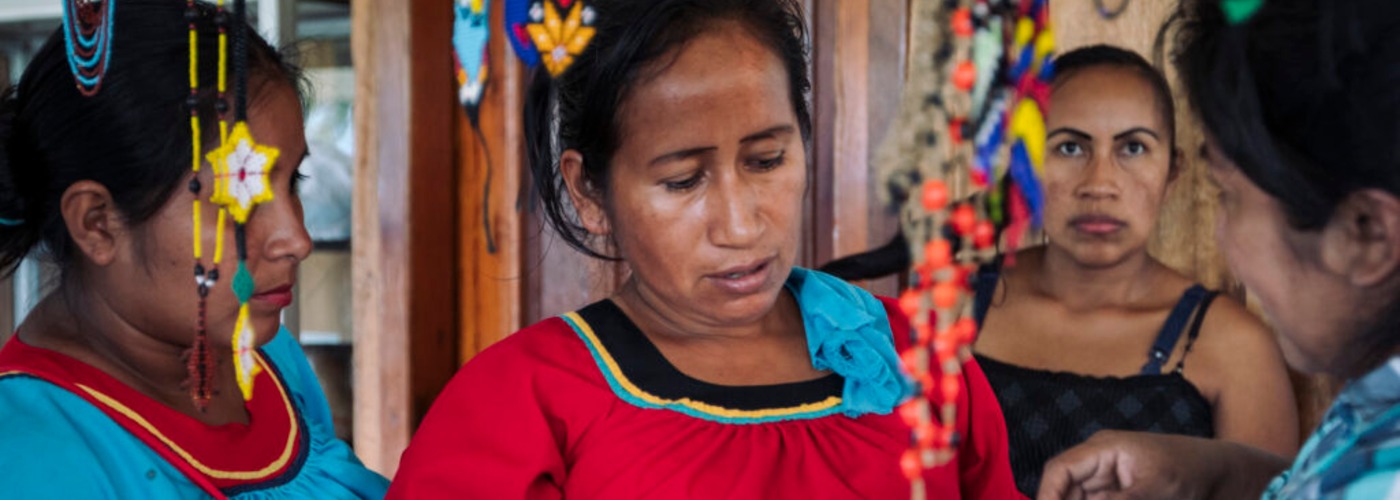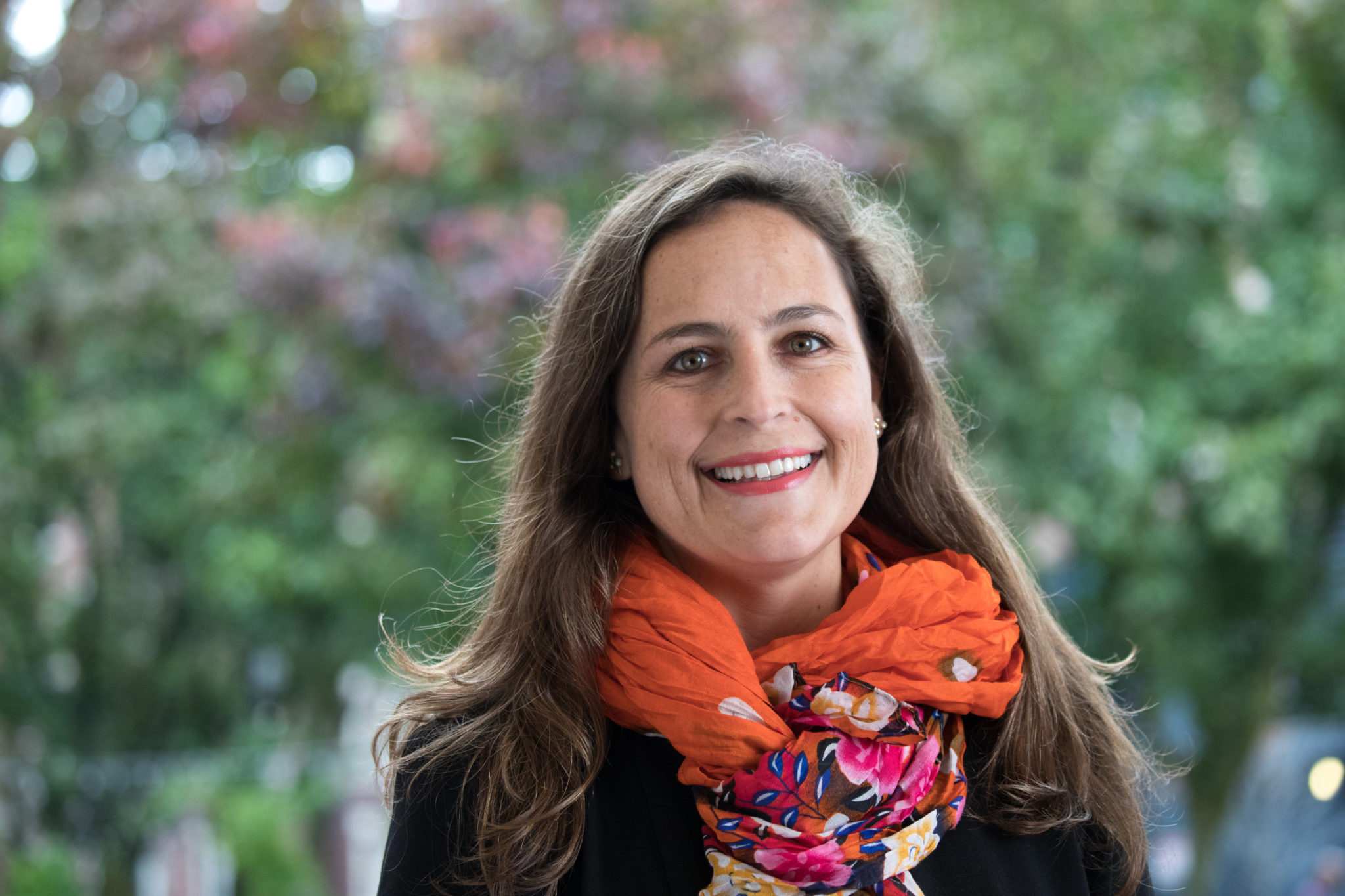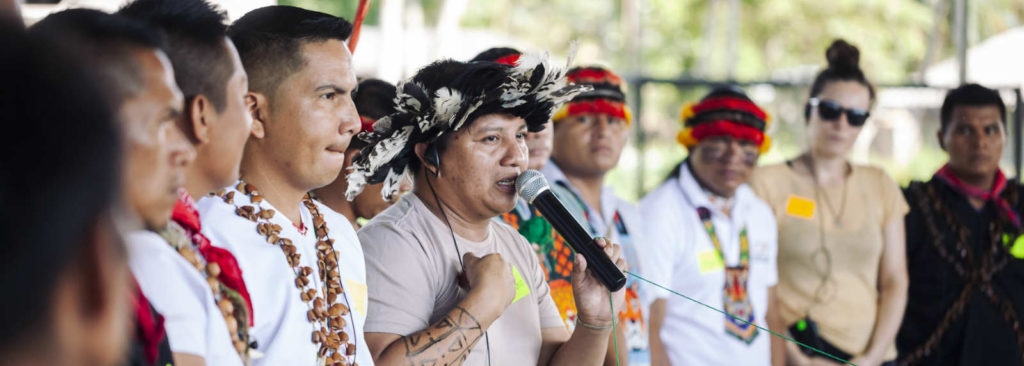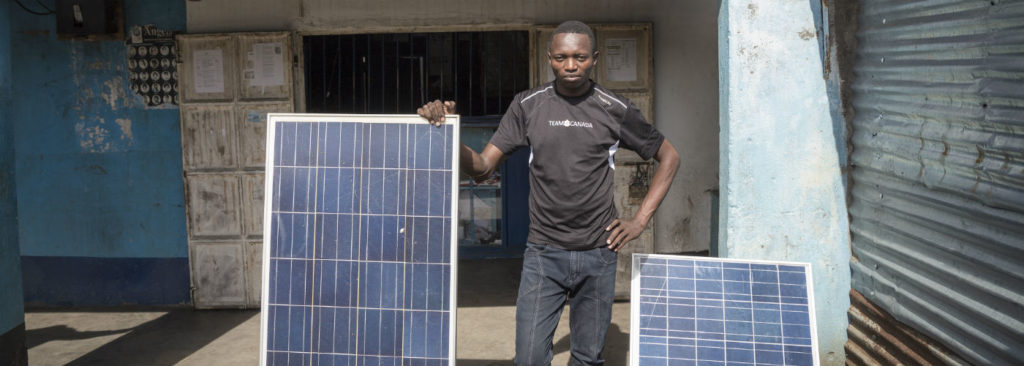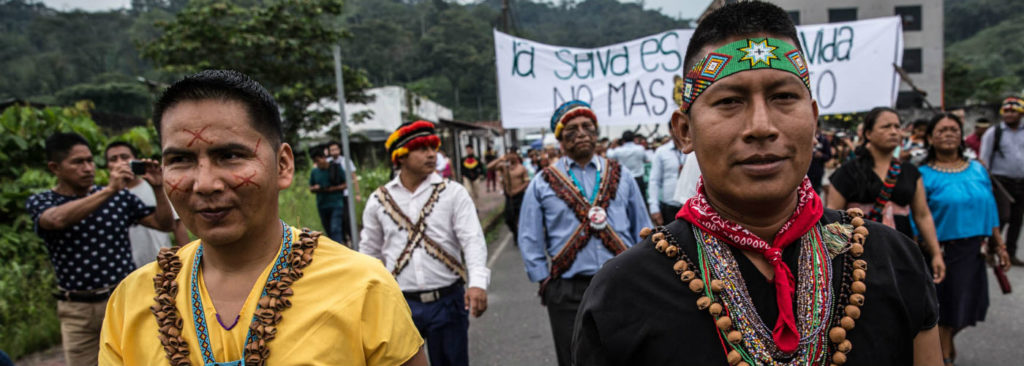The Covid-19 pandemic has hit the Indigenous peoples and nationalities of the Ecuadorian Amazon hard. A lack of access to health care and information, and the continuous invasion of their lands, is exacerbating the spread of the virus. Currently community contagion in Indigenous territories is high, leading to many cases of serious illness and deaths.
To help reduce the impact of the pandemic on Indigenous populations who have lived in vulnerable conditions for many years, our All Eyes on the Amazon program set up the “Amazon Indigenous Health Route.” This is a multidisciplinary response to Covid-19 with an Amazonian Indigenous cultural approach.
Carolina Zambrano, director of the All Eyes on the Amazon program, says this initiative provides a comprehensive prevention and health response. “We’re aiming for a structural change based on increased access for health services – including infrastructure and equipment – knowledge and information sharing, and specialized human resources. This will put health and the specific needs of Indigenous communities first,” she explains.
To achieve this change, Hivos set up and led discussions with representatives of Indigenous peoples and communities, the Ministry of Public Health, Confeniae (the Confederation of Indigenous Nationalities of the Ecuadorian Amazon), the Pan American Health Organization, academics, and civil society. “If we want to strengthen the health care system, we must work hand in hand with the government and the Indigenous peoples and nationalities,” she maintains.
The Amazon Indigenous Health Route won the SDSNAmazonia award, a recognition of innovative and sustainable solutions to address the impacts of Covid-19 in the Amazon. The Health Route does so by:
- Putting rights and cultures at the core of public health systems,
- Improving access to prevention and protection measures, and,
- Supporting communities to take care of their own.
Currently the Route has impact in five provinces of the Ecuadorian Amazon, and benefits 297,000 inhabitants.
Mapping needs
Hivos has mapped the basic requirements of eight Indigenous nationalities (Siekopai, Siona, Waorani, Cofán, Secoya, Kichwa, Shuar and Achuar), as well as equipment, infrastructure and human resources needed by the 200 health centers in the Amazon area. The aim is to identify gaps and set up a strategy to effectively fill them. “This input is key to covering the shortfall in human recourses, speeding up the response to suspected and confirmed Covid-19 cases, generating epidemiological surveillance protocols, and improving access to medicines,” Zambrano indicates.
In addition, informative materials and messages have been adapted to the cultural reality and languages of these Indigenous groups. Hivos identified how each community, from their perspective, manages and understands the pandemic. This has helped enormously to create response models that are much closer to their reality and thus more effective.
“The pandemic has shown how Indigenous peoples and nationalities are exposed to a double risk: Covid-19 without sufficient access to health services, and the threats that already exist in these territories,” Zambrano stresses. Having called for to civil society and the government to pay more attention to the populations of the Amazon, she has come to a sobering conclusion: “The challenges are enormous and require sustained work and commitment for the months – and even years – to come.”
Next phase
Through this collaborative work, Hivos will develop a risk map that will visualize the step-by-step method to improve access to health services with a cultural approach. The goal is to build an inclusive health system for Amazonian Indigenous peoples and communities that is also replicable for other transmittable diseases.
The interview was done by Jonathan Veletanga, and published in Spanish in Edición Médica (in Spanish).

